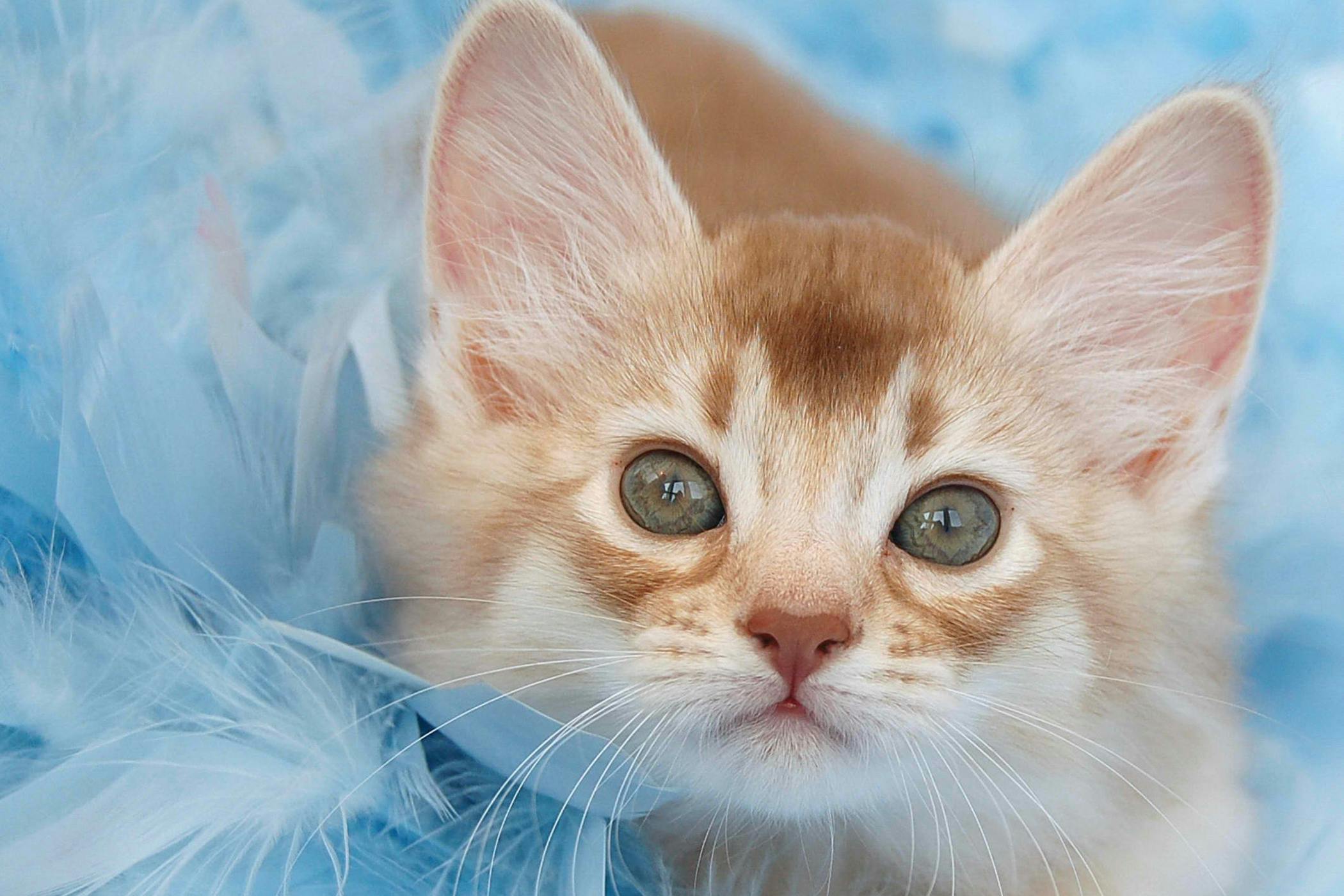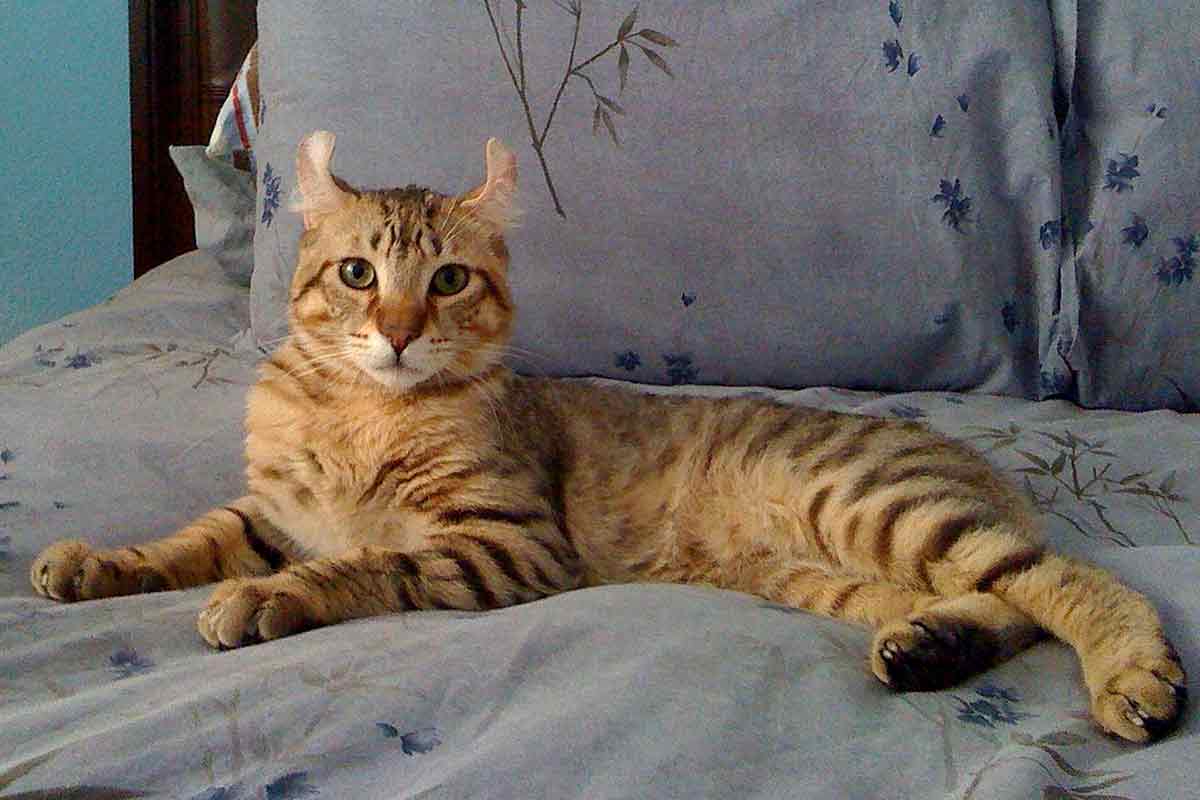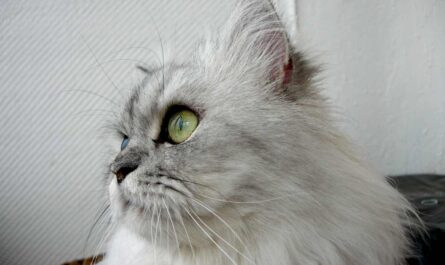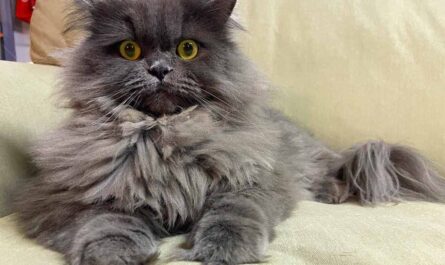What is an American Polydactyl cat breed, its profile, behavior, traits, lifespan, health, training, personality, diet, grooming, care, and other interesting facts? In the intricate world of cat fancier clubs, a unifying term emerges – “American polydactyl cat” – a broad umbrella under which all felines with extra toes find sanctuary. Yet, this inclusivity often becomes a source of bewilderment, leading newcomers down the labyrinth of misconception, as they erroneously perceive American polydactyl cats as a distinct breed, an entity with defined characteristics. The reality, however, is a kaleidoscope of possibilities; polydactyl cats, with their diverse array of breeds and colors, stand united solely by the genetic mutation that gifts them those extra toes, a testament to the unpredictable nature of feline genetics. This article will share insight into the profile, behavior, traits, lifespan, health, training, personality, grooming, care, diet, and other interesting facts about the American Polydactyl cat breed. Keep reading.
American Polydactyl Cat Breeds: Overview
The American Polydactyl cat breeds, distinguished by their extra toes, stand as a captivating marvel in the feline world. These extraordinary cats possess a genetic anomaly that results in more than the standard number of digits on their paws. With an endearing quirkiness, the additional toes contribute to a distinctive appearance that enchants cat enthusiasts and sparks curiosity. While they share a common polydactyl trait, these breeds encompass a spectrum of colors, patterns, and coat lengths, showcasing the diversity within this fascinating category of feline companions.
History
The historical tapestry of the American polydactyl cat, while not confined to a specific breed, is interwoven with a captivating genetic trait. Polydactyly, characterized by the presence of extra toes, is governed by a dominant gene that transcends feline species to include other mammals, even finding a place within the genetic makeup of humans.
Within the realm of feline polydactyly, distinctions emerge in the form of preaxial and postaxial polydactyly. The former results in extra digits forming on the inside of the paw, creating an endearing visual reminiscent of mittens. Conversely, postaxial polydactyly yields additional digits on the outer edges of the paw, prompting endearing nicknames like “snowshoe cat,” “patty paws,” or “pancake paws.”
Notably, the polydactyl trait is not confined to the broader category of American polydactyl cats alone. Pixie Bob and Maine Coon polydactyls stand as distinctive categories, each with its allure. At one juncture, a staggering 40% of all Maine Coon cats boasted extra toes, a trend that endures today. Certain breeders even intentionally select for the polydactyl trait, with The International Cat Association (TICA) recognizing the Maine Coon Polydactyl.
Pixie Bob polydactyls, too, command attention, so much so that they are permitted to be shown and registered, provided they do not exceed seven toes on each foot. Nevertheless, within the broader spectrum of cat breeds, regulations prevail, often disqualifying polydactyl cats from official registration and exhibition, irrespective of the number of extra toes they may possess.
Temperament: Unraveling the Enigmatic Charm
American Polydactyl cat breeds, renowned for their distinct genetic anomaly leading to extra toes, captivate enthusiasts with an intriguing blend of intelligence, friendliness, affection, and insatiable curiosity. These feline wonders, characterized by a surplus of toes on their paws, exhibit a temperament that is as complex as their fascinating physical trait.
Their intelligence shines through in their problem-solving abilities, making them exceptional companions for those who appreciate a cat with both charm and cognitive prowess. Their friendly demeanor endears them to families, while their affectionate nature makes them cherished members of households lucky enough to welcome them into their midst. The inquisitive spirit of these cats adds an element of perpetual surprise to their interactions, ensuring that every moment spent with them is an exploration of their captivating personality.
Personality: The Quirky Tale of Hemingway Cats
Embark on a whimsical journey into the enchanting world of American polydactyl cats, affectionately known as Hemingway cats, a homage to the feline inhabitants that once roamed the storied estate of literary giant Ernest Hemingway in the sun-kissed realms of Florida. These delightful creatures, with their distinctive feature of sporting at least one extra toe on each front foot, present a curious spectacle. Some go even further, adorning their hind feet with this genetic quirk, creating a visual symphony of polydactyl charm. In a select few, this peculiarity is confined solely to their hind feet, defying the norm established by their feline peers.
While the official recognition of American polydactyl cats eludes them in the eyes of the Cat Fanciers Association of America, and despite not being a designated breed, their endearing allure captivates hearts. The extra toes on the front paws contribute to an illusionary spectacle – a cat adorned with mittens, or perhaps one that possesses elusive opposable thumbs. Some polydactyl cats elevate this visual spectacle, boasting paws than double the size of an average feline’s, turning their feet into a canvas of genetic uniqueness.
American Polydactyl Cat Breed Standard
Eyes: Windows to Feline Soul
In the enchanting world of American Polydactyl cats, the ocular allure is as diverse as the stars in the night sky. The captivating gaze of these feline wonders transcends the confines of uniformity, showcasing a kaleidoscope of hues that mesmerizes even the most discerning admirer. The eyes, a canvas of expression, embody the essence of individuality, with a spectrum that spans the entire color wheel. Whether pools of amber, emerald, or sapphire, each cat’s gaze is a unique masterpiece, a testament to the boundless beauty found within the realm of this extraordinary breed.
Legs & Paws: The Dance of Extra Toes
To waltz into the realm of polydactyl perfection, the discerning eye must descend to the lower reaches of the feline form. Legs and paws become a dance floor of diversity, a choreography of extra digits that sets the American Polydactyl apart. For the privilege of carrying the polydactyl moniker, a feline must boast at least one additional toe on a solitary foot, a genetic flourish that adds a touch of whimsy to each step. This deviation from the norm transforms mundane paw prints into intricate footprints, a signature of peculiarity etched into the very fabric of these enchanting creatures.
Tail: A Whimsical Appendage
The tail, an oft-overlooked appendage in the feline kingdom, becomes a whimsical masterpiece within the American Polydactyl breed. Here, uniformity is an alien concept as tails defy convention, adopting shapes, sizes, and lengths as diverse as the cats themselves. It may be a languid, sinuous trail of elegance or a proud, bushy proclamation of vitality. Each feline tail tells a story, a narrative woven into the very anatomy of these captivating creatures, adding an extra layer of mystique to their already enigmatic charm.
Body: The Canvas of Feline Diversity
The canvas upon which the breed’s unique traits are painted, the body of an American Polydactyl cat is a masterpiece of diversity. Unlike the rigid constraints imposed by conformity, the body of these feline wonders is a testament to the beauty found in variation. With contours that echo the distinctive features of their respective breeds, these cats redefine the notion of standardized beauty. From the robust and muscular to the sleek and slender, each body is a chapter in the ongoing saga of the American Polydactyl, an embodiment of the rich tapestry of feline form.
Head: The Throne of Feline Majesty
In the regal domain of the American Polydactyl, the head reigns supreme, a throne of feline majesty. The crown of this monarchy is not bound by the shackles of conformity; instead, it embraces a multitude of sizes and shapes. Whether adorned with the elegance of a sculpted visage or the endearing charm of a round countenance, each feline head is a testament to the breed’s rejection of uniformity. Within this realm, diversity is celebrated, and the head becomes a distinctive feature, a beacon of individuality that adds to the allure of these captivating creatures.
Ears: The Symphony of Auricular Elegance
The ears, delicate sentinels of the feline world, become a symphony of auricular elegance within the American Polydactyl breed. Eschewing the notion of standardized size and shape, these feline appendages become a canvas for uniqueness. From the regal upright posture to the charmingly folded embrace, each ear contributes to the visual melody that defines the breed. In the world of American Polydactyls, ears are not merely functional; they are an integral component of the visual symphony that elevates these cats to a realm of unparalleled aesthetic sophistication.
Coat: A Tapestry of Feline Fashion
The coat, a luxurious tapestry that drapes the American Polydactyl in splendor, is a testament to the breed’s commitment to diversity. Here, length is not a constraint, but rather a canvas for expression. Whether adorned in the flowing elegance of a long coat, the practicality of a medium length, or the sleek allure of a short coat, each feline becomes a walking masterpiece. The coat becomes an external manifestation of the breed’s internal rejection of uniformity, a living testament to the beauty found in embracing the full spectrum of feline fashion.
Color: A Chromatic Kaleidoscope
In the kaleidoscopic world of American Polydactyl cats, color is not a limitation but a boundless realm of possibility. The palette from which these feline wonders draw is as diverse as the imaginations that conceive them. Patterns and hues converge to create a living canvas of visual delight. Whether adorned in the regal simplicity of a solid hue or the intricate complexity of a mesmerizing pattern, each cat becomes a walking testament to the limitless permutations of feline coloration. In the world of the American Polydactyl, diversity is not just encouraged; it is celebrated in every shade and nuance.
Other Names: The Hemingway Cats
Adding to the mystique surrounding American Polydactyl cats is their alternative moniker – the Hemingway cats. This affectionate moniker pays homage to the literary giant, Ernest Hemingway, who had a predilection for these unique felines. Legend has it that Hemingway was gifted a polydactyl cat by a ship’s captain, and this marked the beginning of a storied connection between the author and these extraordinary cats.
The moniker, “Hemingway cats,” not only highlights the historical association but also evokes an image of these felines as literary muses, perhaps imbued with a touch of the creative spirit that surrounded the renowned writer. This alternative name serves as a testament to the cultural and historical significance of these cats, adding a layer of richness to their already compelling narrative.
Affection Level
When delving into the captivating realm of American Polydactyl cat breeds, one cannot help but be intrigued by the diverse spectrum of affection levels exhibited by these feline companions. Picture a world where each breed seems to possess a unique emotional fingerprint, shaping their desire for connection and companionship. Some breeds, with an exuberant overflow of affection, crave the touch of human hands, yearning for endless snuggles and petting sessions.
Their purrs become a melody of contentment, echoing the deep bonds they form with their human counterparts. On the flip side, there exist breeds that maintain a certain aloofness, a stoic independence that sets them apart. These less-affectionate felines, while not entirely dismissive of human interaction, carry themselves with an air of autonomy, demonstrating a preference for solitude. In the rich tapestry of American Polydactyl cat breeds, the tapestry is woven with threads of affection, creating a mosaic of emotional connections that vary from one breed to another.
The Maritime Myth of Polydactyl Prowess
Sailors, those intrepid mariners who weathered the tempestuous seas, held a peculiar belief close to their hearts: the presence of polydactyl cats on board was synonymous with good fortune. These feline companions, distinguished by their surplus of toes, possessed a unique advantage when navigating tumultuous waters. The expanse of their wide paws served as an extraordinary stabilizer, ensuring a steadfast balance even when the ocean’s temperament turned capricious. It was not just a mere superstition; polydactyl cats earned their stripes as adept hunters, outclassing their ordinary counterparts in the art of mouse-catching. In the maritime realm, these enigmatic creatures became talismans of stability and success.
Hemingway’s Polydactyl Paradise
Nestled within the sun-kissed confines of Key West, Florida, lies the legendary estate of the incomparable wordsmith, Ernest Hemingway. Within the hallowed grounds of this literary haven, an extraordinary feline legacy unfolds—approximately 50 descendants of Hemingway’s cherished polydactyl cat, Snow White, roam freely. Strikingly, nearly half of these regal descendants boast an abundance of toes, a testament to the pervasive genetic trait that perpetuates the polydactyl charm. Hemingway’s estate, a veritable polydactyl paradise, resonates with the pitter-patter of extraordinary paws, each step echoing the literary echoes of a bygone era.
Guinness Glory: The Tale of Paws and Jake
In the annals of feline fame, etched amidst the pages of the Guinness Book of World Records, two remarkable tabbies stand toe to toe—literally. Paws, a resplendent harlequin tabby, and Jake, an effervescent orange tabby, share the coveted title of world record holders, each adorned with an astonishing 28 toes. The symmetry of their toe-counting prowess is nothing short of extraordinary, a feat that transcends the ordinary boundaries of feline achievement. These polydactyl prodigies, etching their place in the record books, embody the pinnacle of genetic eccentricity, standing as living testaments to the captivating allure of extra toes.
Activity Level: The Energetic Symphony of American Polydactyl Cat Breeds
As we navigate the multifaceted landscape of American Polydactyl cat breeds, the concept of activity levels emerges as a dynamic force, shaping the daily rhythm of these agile feline companions. Imagine a ballet of fur and whiskers, where some breeds pirouette through the day with an unbridled exuberance, engaging in lively bouts of play that demand both space and attention. These high-energy felines transform the living space into a stage, where leaps, and bounds, and acrobatics become their expressive art form.
On the contrary, within this feline menagerie, there exist breeds that navigate life with a more composed cadence. These cats, while not averse to play, exhibit a more measured approach, finding contentment in moments of repose and contemplation. The spectrum of activity levels within American Polydactyl cat breeds unveils a vibrant spectrum, illustrating how each cat contributes to the dynamic symphony of movement that defines their daily existence.
Kid-Friendly American Polydactyl Cat Breeds
When delving into the enchanting world of American Polydactyl cat breeds, one essential aspect to consider is their compatibility with children. The feline realm encompasses a spectrum of temperaments, and deciphering their inclination towards youngsters is pivotal. Breeds that earn a higher rating in this realm are characterized by a sublime blend of gentleness and patience. These felines, attuned to the unpredictable energy of children, navigate playfulness with an innate grace. Conversely, those inhabiting the lower rungs of the kid-friendly scale may find themselves a tad disconcerted amidst the exuberance of youthful exuberance.
Sociability Among American Polydactyl Cat Breeds
In the labyrinth of feline sociability, American Polydactyl cat breeds showcase a diverse array of preferences. A paramount consideration for prospective cat parents is understanding the degree of social interaction their chosen breed craves. Those graced with a higher sociability rating become unabashed companions, reveling in the prospect of spending entire days intertwined with their human counterparts. On the flip side, breeds with more reserved sociability tend to be selective in their pursuit of human interaction, perhaps offering moments of affection on their terms. Deciphering these nuances is akin to unraveling a tapestry, each thread contributing to the unique social fabric of these captivating feline companions.
Playfulness: Exploring the Feline Joie de Vivre
In the realm of American polydactyl cat breeds, the trait of playfulness emerges as a defining characteristic that varies across the feline spectrum. The dynamic and enigmatic nature of playfulness in these breeds finds its roots in their innate hunting instincts, which are often more pronounced and refined. It’s not merely about batting a toy; it’s a manifestation of a deep-seated hunting prowess that transforms playtime into a thrilling, engaging experience. These feline companions, scoring higher in the playfulness category, become not just pets but animated playmates, capable of turning a mundane afternoon into a captivating adventure.
Independence: The Lone Wanderers and Social Butterflies
Independence, another facet of the American polydactyl cat breeds, creates a spectrum where feline personalities unfurl in diverse patterns. Cats with a higher score in independence exhibit an almost regal ability to spend extensive periods alone, savoring solitude with an air of self-sufficiency. They are the solitary wanderers, content in their own company, navigating the world on their terms. On the flip side, less-independent breeds crave attention and human interaction, seeking companionship and social engagement. These social butterflies thrive on the warmth of human presence, requiring constant interaction to satiate their need for connection.

Cost of American Polydactyl Cats
The acquisition of an American Polydactyl cat is not a trifling matter, as these distinctive feline companions come with a price tag that ranges between $500 and $2,000. This price spectrum encapsulates various factors, including lineage, pedigree, and breeder reputation. The lower end of the scale might encompass more modestly bred cats, while the upper echelons signify those with impeccable lineage and possibly even show-quality attributes. Prospective cat owners should be prepared for this financial commitment, understanding that the uniqueness of the American Polydactyl breed contributes to its market value.
Size of American Polydactyl Cats
In the realm of feline proportions, the American Polydactyl cat stakes its claim as a medium-sized marvel. The fully matured exemplars of this breed typically tip the scales at a weight ranging from 7 to 15 pounds, though outliers on either end of this spectrum are not unheard of. Furthermore, their stature reaches heights spanning from approximately 10 to 14 inches. This harmonious blend of size attributes contributes to the distinctive physical presence of the American Polydactyl, making them a captivating choice for those seeking a feline companion that is neither diminutive nor colossal in stature.
Lifespan of American Polydactyl Cats
Contemplating the prospect of welcoming an American Polydactyl cat into your abode necessitates acknowledging the temporal commitment involved. These captivating creatures, on average, grace their human counterparts with their presence for a commendable span of 14 to 16 years. This longevity is a testament to the robust health and vitality inherent in the American Polydactyl breed. As prospective cat parents consider the responsibilities of pet ownership, the assurance of a decade-and-a-half companionship underscores the enduring bond that can be forged with these unique polydactyl wonders.
Shedding Habits of American Polydactyl Cats
Embarking on the journey of feline companionship prompts inquiries into the grooming requirements, particularly shedding habits, of the chosen breed. In the case of the American Polydactyl, whose aesthetic charm is complemented by a luxurious coat, shedding is a facet that demands consideration. While these cats boast a plush, long-haired coat, the shedding propensity is not as pronounced when compared to some of their counterparts. Cat enthusiasts contemplating the adoption of an American Polydactyl can find solace in the fact that, despite their impressive fur, the shedding remains within manageable limits, offering a harmonious balance between aesthetic appeal and grooming demands.
Vocality: The Symphony of Feline Expressions
In the symphony of feline expressions, vocality emerges as a distinctive note, echoing the varied personalities within American polydactyl cat breeds. A higher rating in this intriguing category unveils a breed prone to vocalizations, transforming the domestic space into a lively conversation. Meowing becomes an art form, a means of communication that goes beyond the mundane. These vocal breeds express themselves with a rich vocabulary of meows, purrs, and trills, turning every interaction into a nuanced exchange. On the contrary, breeds with a less vocal inclination are the silent contemplators, happy to observe the world around them in serene quietude, revealing their thoughts through subtle gestures and expressive body language.
Cerebral Prowess: Intelligence in American Polydactyl Cat Breeds
The intellectual landscape of American Polydactyl cat breeds is a fascinating terrain, where cognitive prowess paints a portrait of feline ingenuity. Intelligence, a multifaceted trait in the feline realm, encompasses curiosity, investigative prowess, and trainability. Those perched at the higher echelons of intelligence are akin to nimble-minded scholars, constantly exploring their surroundings with insatiable curiosity.
Their penchant for learning and adaptability renders them amenable to training, transforming the human-feline dynamic into a harmonious symphony of comprehension. On the contrary, breeds graced with less cerebral prowess may not be as easily swayed by the allure of training sessions. Yet, their laid-back demeanor and easygoing nature weave a tapestry of tranquility within the domestic sphere. The intelligence spectrum among American Polydactyl cat breeds thus offers a captivating insight into the diverse cognitive landscapes these feline companions navigate.
Pet-Friendly
In the intricate web of social dynamics, the pet-friendliness of American Polydactyl cat breeds emerges as a fascinating facet. Envision a world where feline and canine coexistence is not just a possibility but a harmonious reality. The pet-friendly nature of these breeds unravels a narrative of camaraderie, exploring how well they integrate into households with not just fellow felines but also their canine counterparts. Some breeds, with a natural flair for diplomacy, seamlessly navigate the complex terrain of interspecies relationships.
They extend their affable nature beyond the feline realm, establishing bonds with dogs and other pets, and fostering a unified and amicable household. Conversely, there are breeds that, while not hostile to their furry counterparts, exhibit a more reserved stance, preferring the company of their feline kin. The pet-friendly quotient of American Polydactyl cat breeds thus becomes a captivating exploration of social dynamics, illustrating the diverse ways in which these feline companions contribute to the rich tapestry of a multi-pet household.
Life Expectancy: The Passage of Time with Polydactyl Companions
As with any exploration of a feline wonder, it is crucial to consider the temporal aspect of their presence in our lives. American Polydactyl cats, on average, grace their human companions with their unique charm for a span of 14 to 16 years. This extended period of companionship ensures that those who choose to share their lives with these extraordinary cats have the opportunity to forge deep and lasting bonds.
The passage of time with these polydactyl companions becomes a journey marked not just by the peculiar joy of their physical uniqueness but also by the enduring connection fostered by their intelligence, friendliness, and affectionate nature. In contemplating their life expectancy, one is prompted to appreciate the profound impact these feline anomalies can have on the human experience, shaping it with their paw prints and toe-filled elegance.
Care: Nurturing the Quirks of Polydactyl Paws
When it comes to caring for American Polydactyl cat breeds, attention to their unique physical feature is paramount. The extra toes, though endearing, require meticulous care to prevent issues like ingrown nails or difficulty in grooming. Regular inspections of the paws, coupled with gentle nail trimming, become integral components of their care routine. Additionally, providing comfortable and spacious litter boxes accommodates their distinctive paw structure, ensuring a stress-free toileting experience. Beyond the paws, these cats thrive on social interaction, necessitating an environment rich in stimulating toys and engaging activities.
Nutrition: Tailoring Diets to Satisfy Polydactyl Palates
Crafting a balanced and nutritious diet is a cornerstone of maintaining the well-being of American Polydactyl cats. Tailoring their nutrition to accommodate the potential uniqueness in metabolic needs ensures optimal health. Incorporating high-quality cat food with essential nutrients, vitamins, and minerals caters to their overall health, promoting shiny coats and robust immune systems. Given their potential for varying activity levels, monitoring their weight and adjusting portion sizes becomes an integral part of their dietary management. Consultation with a veterinarian aids in formulating a customized nutritional plan, and addressing any breed-specific concerns.
Exercise: Channeling Polydactyl Energy with Playful Pursuits
Unlocking the playful energy inherent in American Polydactyl cat breeds necessitates a thoughtful approach to exercise. Enriching their environment with interactive toys, climbing structures, and puzzle feeders engages their agile minds and bodies. The extra toes, often contributing to enhanced dexterity, make activities like batting at toys or navigating intricate play structures a delightful spectacle. Regular play sessions not only provide physical exercise but also foster a strong bond between the cat and its human companions. Outdoor adventures within safe confines offer an additional avenue for these curious felines to explore and indulge their instincts.
Grooming: A Feline Primping Paradox
In the intricate tapestry of feline diversity, grooming emerges as a crucial thread, weaving tales of maintenance and care that vary across different cat breeds. The grooming landscape for American polydactyl cats is a nuanced panorama, where breeds boasting higher grooming scores demand a meticulous touch, necessitating regular sessions of brushing and bathing to maintain their pristine fur and hygiene. In stark contrast, the lower-scoring counterparts in the grooming spectrum offer a paradoxical respite, being virtually maintenance-free entities in the realm of feline aesthetics.
Health
Ensuring the optimal health of your American Polydactyl cat involves a holistic approach, starting with their dietary requirements. Remarkably, these unique feline companions do not demand a specialized nutritional regimen; rather, they thrive on the same high-quality cat food that satisfies the palate of their non-polydactyl counterparts. To cater to their overall well-being, it is recommended to adhere to a carnivorous diet, ensuring a balance of essential nutrients.
Beyond dietary considerations, grooming plays a pivotal role in maintaining the health and appearance of American polydactyl cats. The grooming regimen is contingent upon the length of their coat, with short-haired felines requiring a weekly brushing or combing session to manage excess hair and curb shedding. Conversely, long-haired counterparts benefit from a more frequent daily brushing and combing routine.
Nail care is another facet of feline health that demands attention, particularly for polydactyl cats. Early introduction to nail trimming is crucial, given the propensity of their claws to grow at irregular angles. Unattended, this may lead to discomfort, snagging, and an overall nuisance. Tending to your cat’s nails not only safeguards your furniture but also ensures the well-being of your skin.
Exercise is integral to the health equation for these unique feline companions. Regular physical activity not only aids in weight management but also alleviates stress on their joints, promoting overall comfort as they age gracefully. Enriching their environment with climbing towers and a variety of toys, both independent and interactive, contributes significantly to their physical and mental well-being. Cat accessories on Amazon
While polydactyl cats, in general, are not predisposed to worrisome health conditions, some may experience ingrown claws if not trimmed properly. In cases where the additional digits consist of soft tissue only, there may be a susceptibility to injuries if not properly fused to the cat’s skeletal structure.
Deformities present at birth, such as painful fused toes, are possible, though not universal. Individualized veterinary assessment of your polydactyl cat’s feet is recommended to identify and address potential problems. Fortunately, with proper care and attention, these fascinating feline companions often enjoy a long and healthy life comparable to their non-polydactyl counterparts.
Another health consideration worth mentioning involves a condition that may resemble polydactyly. Feline radial hypoplasia manifests as extra toes on a cat’s feet, growing alongside the normal toes. While this condition may not induce pain, it can result in significant foot deformities in subsequent generations if cats with feline radial hypoplasia are bred.
Other Interesting Articles
- Turkish Vankedisi Cat Profile, Traits, Health, Grooming, Care
- Ukrainian Levkoy Cat Breed: Profile, Traits, Grooming, Care
- Ussuri Cat Breed: Profile, Traits, Personality, Grooming, Care
- York Chocolate Cat Breed: Profile, Traits, Health, Care
- Tonkinese Cat Breed: Profile, Traits, Health, Grooming, Care
- Siberian Cat Breed: Profile, Traits, Health, Grooming, Care
- How to Perfectly Place A Litter Box for Your Cat? 46 FAQs
- 17 Best Types of Toys to Play at Home with Your Cat
- Snowshoe Cat Breed: Profile, Traits, Health, Grooming, Care
- Munchkin Cat Breed: Profile, Traits, Personality, FAQs, Care
- Minuet Cat Breed: Profile, Traits, Personality, Grooming, Care
- Persian Cat Breed: Profile, Traits, Personality, Health, Care
- Ragdoll Cat Breed: Profile, Traits, Personality, Grooming, Care
- Scottish Fold Cat Breed: Profile, Traits, Personality, FAQs, Care
- Russian Blue Cat Breed: Profile, Traits, Personality, FAQs, Care
- Balinese Cat Breed: Profile, Traits, Personality, Care, Facts
- Australian Mist Cat Breed: Profile, Traits, Personality, Care
- Abyssinian Cat Breed: Profile, Traits, Personality, Care, Facts
- Bengal Cat Breed: Profile, Traits, Personality, Care, Grooming
- Birman Cat Breed: Profile, Traits, Personality, Care, Grooming



